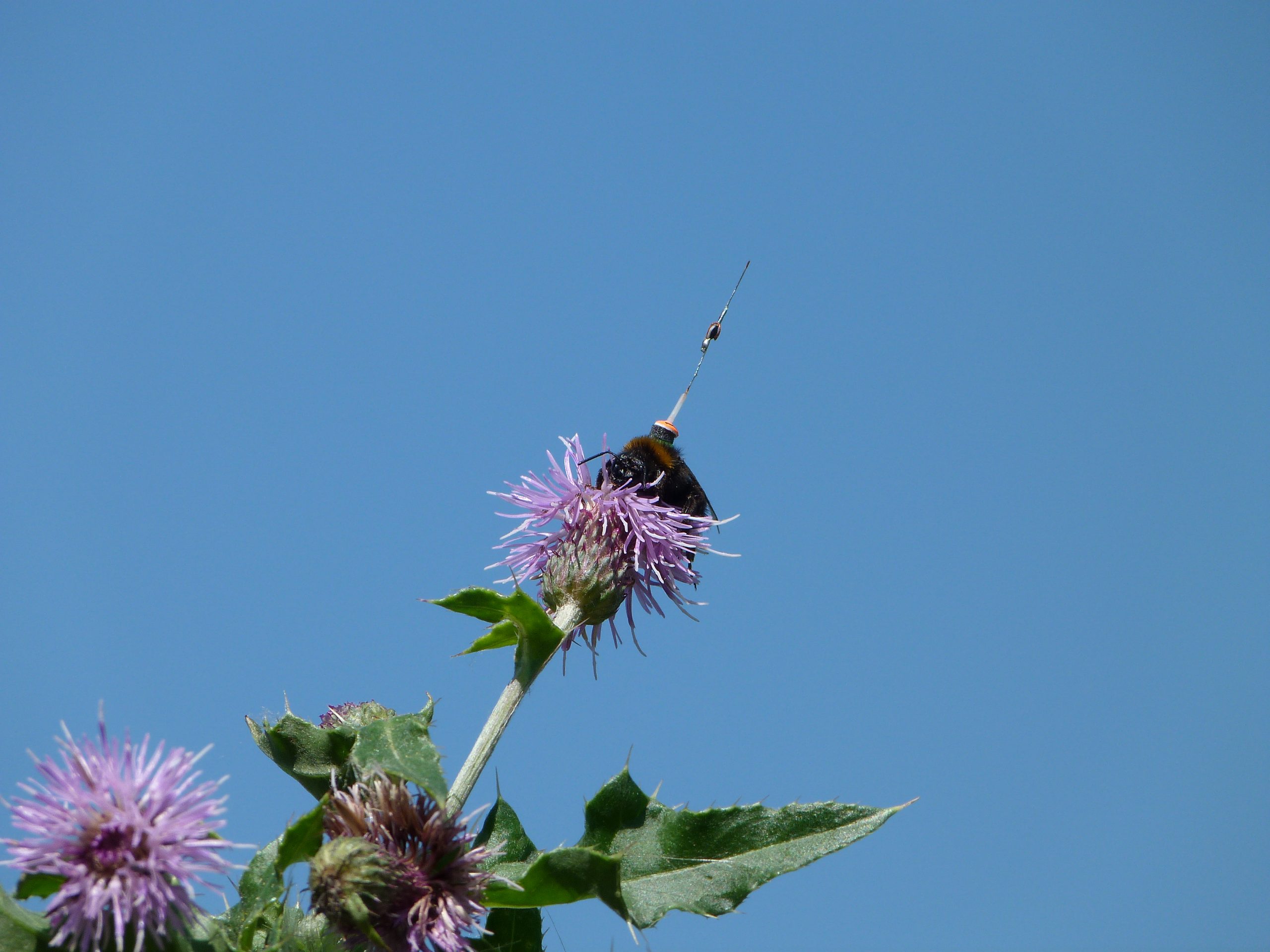Tracking Coverage of the Radar Tracked Bees
In a recently published PLOS Biology Research Article, by Prof Lars Chittka and colleagues, (and an accompanying Synopsis), the authors revealed how bumblebees quickly find the shortest route to feed from numerous flowers. In this PLOS Biologue post, we take a look at some of the media interest in this article.
Environment Correspondent Louise Gray summarises the study, and how it could help farmers identify the best ways to grow crops to ensure faster pollination. “The results showed that the bees would try a number of different routes to a flower and between plants in order to work out the quickest way to and from a food source. Within hours or even minutes, the apparently random ‘flight of the bumblebee’ is an efficient and learned route.”
The online newspaper goes into further detail of the methods used by Prof Chittka and his team, including arrangements of the flowers in the wild, and the average amount of time the bees took to learn the fastest route. “Scientists tracking the flight of the bumblebee have been astonished by the power of the insects’ tiny brains. Let loose to find their way among five artificial flowers in a one kilometre-wide field, the bees quickly learned which routes were the most efficient.”
BBC Radio Four’s Material World
In this episode of the weekly radio programme, Quentin Cooper interviews the lead author about the study and the high tech methods used by the team; “We glued little radar antennae on the backs of bees when they left the hive” explains Prof Chittka. “They don’t necessarily like being manhandled and having an antenna on their back, but we’re stronger.”
Associate Editor Katherine Harmon explains the differences between the cognitive behaviour of these bees compared to larger brained animals. “Although this navigation seems to be a no-brainer for the bees, we humans needed mathematical algorithms to analyze and understand the elegance of their behavior.”
Virginia Morrell from ScienceNow looks at the study from a mathematical perspective, by homing in on the well known ‘traveling salesman’ problem. “Bumblebees foraging in flowers for nectar are like salesmen traveling between towns: Both seek the optimal route to minimize their travel costs. Mathematicians call this the ‘traveling salesman problem,’ in which scientists try to calculate the shortest possible route given a theoretical arrangement of cities.”
And here is a snippet of the reaction from Twitter users following the recent PLOS Biology publication from the Chittka Lab, showing how bumblebees quickly find the shortest route to feed from a selection of flowers.
http://storify.com/PLoSBiology/and-here-s-what-twitter-had-to-say#publicize


